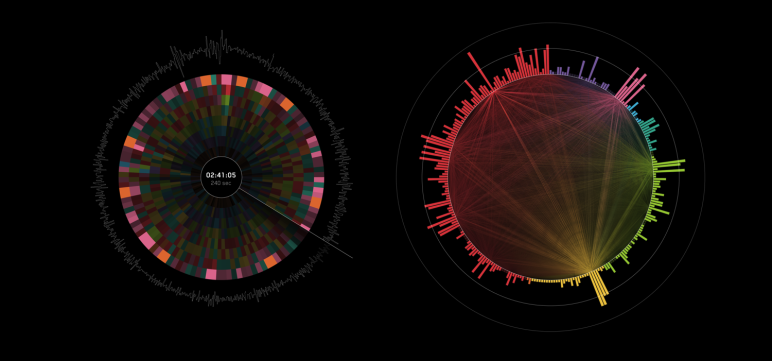Eliminating terrestrial noise sources to improve the LIGO gravity wave detectors

In their search for gravitational waves—stretches in space-time produced by dramatically violent events in the distant universe—researchers at the Laser Interferometer Gravitational-Wave Observatory (LIGO) have created some of the most sensitive detectors in the world. Unfortunately, these detectors also pick up on lots of other disturbances—for example, strong winds or the sounds of a passing truck. Students from the Data Visualization Summer Internship program—operated by faculty members from Caltech, JPL, and Art Center College of Design—were tasked with determining if a blip on the detector is a gravitational wave or instead just a signal from ordinary bumps and shakes.
To do this, they developed these colorful visualizations to represent how signals are related to known events. The dial on the left marks the time at which each event was recorded; on the right, the height of the bars indicates the strength of each event while the lines connecting the bars indicate how strongly these events are correlated to one another. Coupled with the existing analytical methods used by LIGO, this new way of looking at things will help researchers identify and eliminate terrestrial noise sources, directly improving the astrophysical reach of the LIGO detectors—and making those elusive gravitational waves just that much easier to detect.
Provided by California Institute of Technology



















